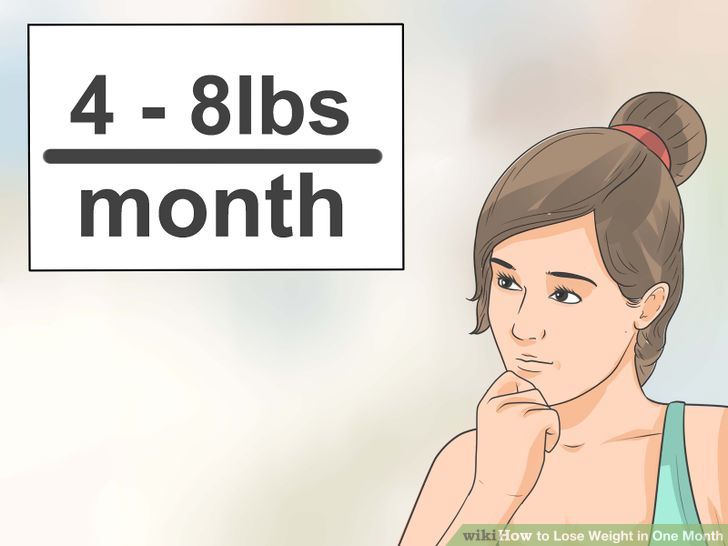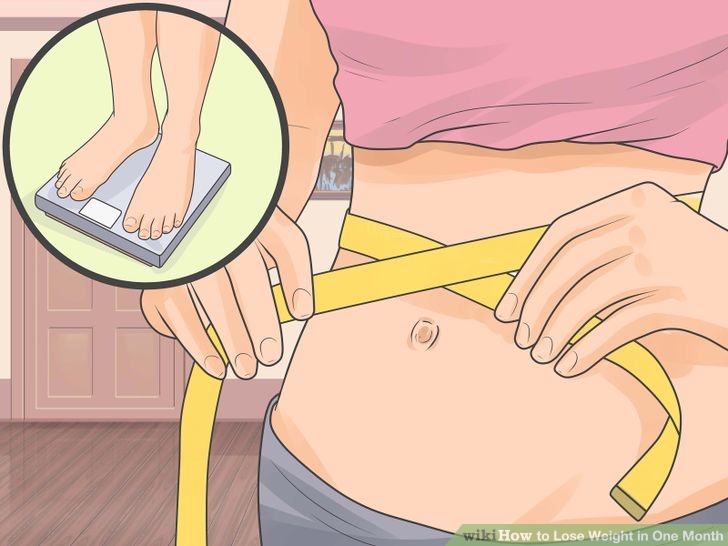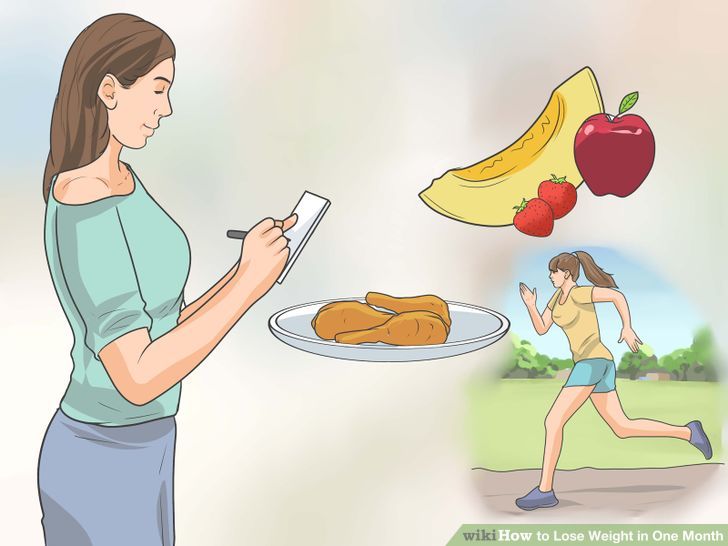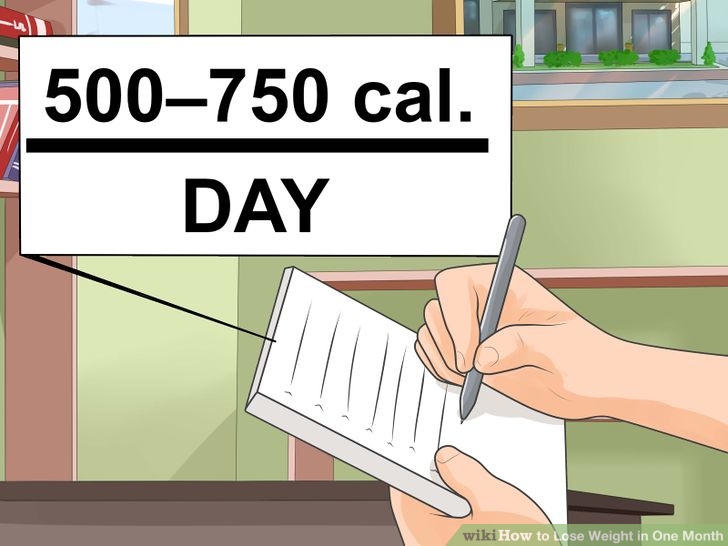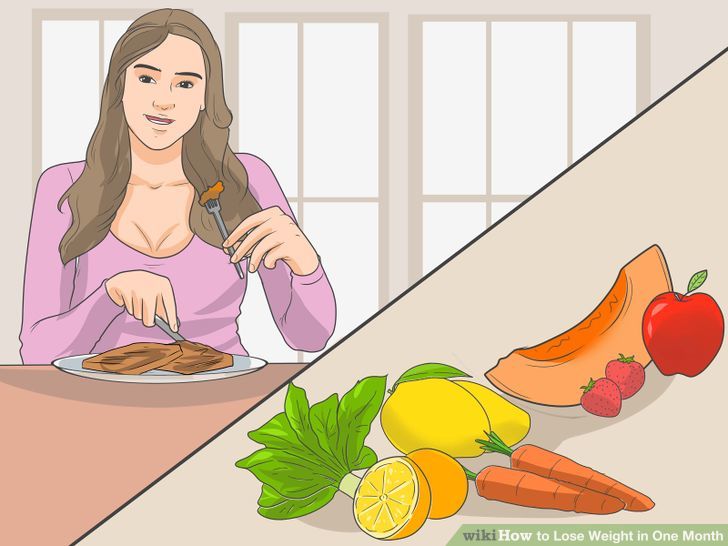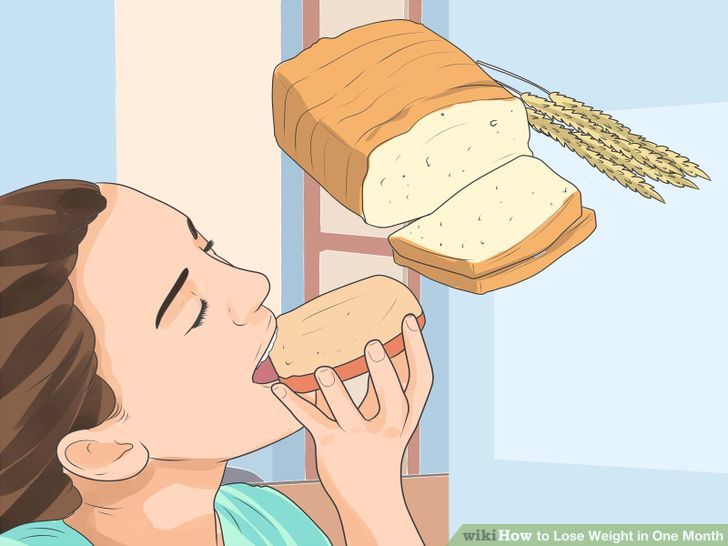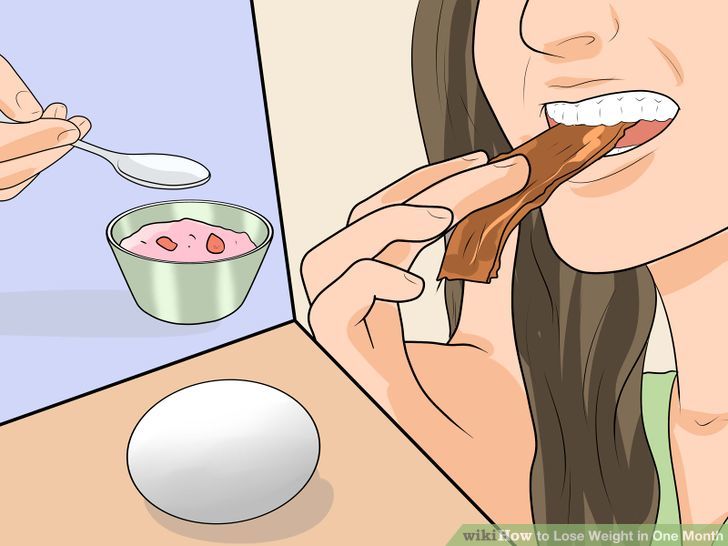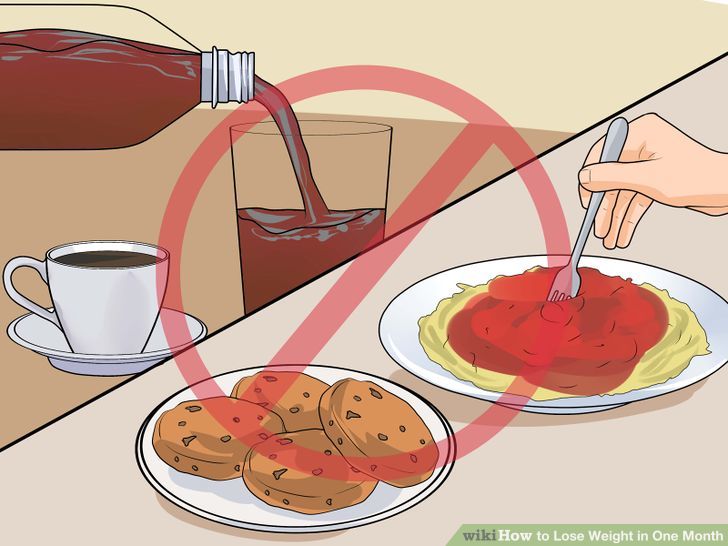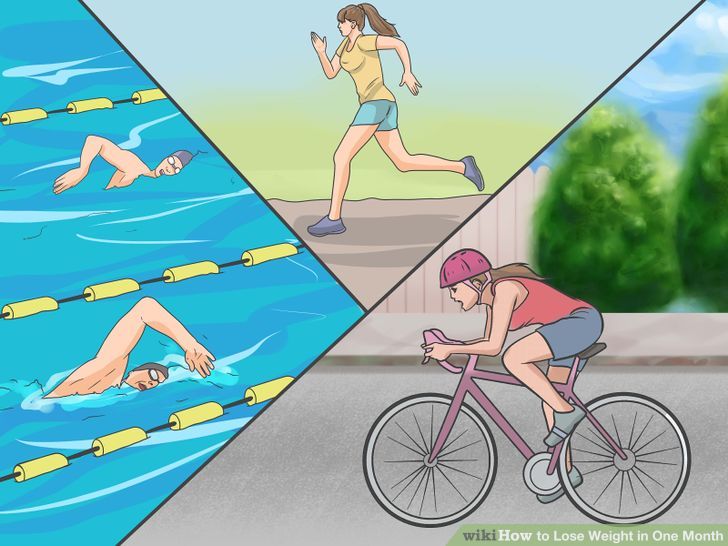Giving yourself one month to lose weight is a great way to start a weight loss plan. Realistically, you can expect to lose about 5 to 8 pounds per month.[1] This rate of weight loss is generally considered healthier, safer and more sustainable long-term. You will need to make a variety of changes to your diet, exercise routine and lifestyle during the month to help you drop excess weight and improve your overall health.
1 Set a goal.
Setting a realistic weight or health goal is a great start to your weight loss plan. It will give you something to track and work towards over the course of a month.
Think about how much weight you want to lose, what time frame and other health or wellness goals. Set a goal for how much weight and what target weight you’d like to get to within a month.
A healthy rate is generally considered 1 to 2 pounds a week. So what does this mean? Generally, you can lose up to 4 to 8 pounds in a month. Setting a goal to lose more than this amount is generally not realistic.
You may also want to set goals about exercise or lifestyle factors. For example, you might set a goal of working out three days a week for 30 minutes. This is a great health-based goal but will also support your weight loss.
Remember, dramatic weight loss is risky and often ineffective; the faster you lose weight, the easier you can gain it back. Only real lifestyle changes can give you effective results. “Fad diets”, such as diet pills or liquid cleanses may help you lose water weight, but most work by essentially starving you.
2 Take your measurements.
Taking measurements is the most effective way to track your progress. It also can provide information of whether or not your diet and exercise program are effective.
Weighing yourself regularly is an easy way to track your progress. Step on the scale one to two times per week and track your weight over time.[2] You will most likely see the most weight loss in the first week or two during your month time frame.
Since weight alone doesn’t tell you the full story of your weight loss, you might want to consider taking measurements. This can help you see where you’re losing weight.
Take measurements around your shoulders, bust, waist, hips, thighs and measure them about once every two weeks. Over the course of a month, you should be able to see some noticeable changes.
Combine with Clenbuterol

Clenbuterol 5 boxes 250 tabs / 20 mcg
Is available in 0,02…
$119.95$80.00
3 Start a journal.
A journal is a great tool when losing weight. You can use it to help you prepare for weight loss, motivate you during weight loss and to help keep you on track to maintaining your weight.
Initially, jot down notes about your weight loss or health goals in your journal. Write about how much weight you want to lose and how you’re going to track your progress.
You may also take notes on what aspects of your diet or lifestyle you think you want to change. For example, you might want to cut out sodas, increase your activity or eat more fruits and vegetables.
In addition, you can use your journal to keep a food and exercise diary. Studies have shown that those people who keep track of their food intake and exercise are able to maintain weight loss longer.
Changing Your Diet
4 Calculate a calorie limit.
In order to lose weight, you’ll need to cut out some calories each day. You can choose to cut out calories from diet alone or combine diet and exercise.
One pound of fat is about 3500 calories. To lose a pound of fat per week, you need to eat 3500 calories less than you take in each week. Cutting out 500 calories daily will help you lose one to two pounds per week. Following this plan over the course of the month will help you lose that 5 to 8 pounds.
Use your food journal or a food journal app to help you get an idea of how many calories you can cut out from your diet. Subtract 500 calories from a typical day to get a calorie level that will help you lose about one to two pounds per week.
Do not go below 1200 calories daily. This may result in nutrient deficiencies, loss of lean muscle mass and slower weight loss long-term. If you continuously do not eat an adequate amount of calories over a month, you may notice your weight loss slows or stops.
The best way to cut calories is to eat nutrient-rich, low-calorie foods combined with regular physical activity
5 Include protein,
fruits and vegetables at each meal. When you’re trying to lose weight and cut calories from your diet during the course of a month, you’ll want to focus on eating low calorie, yet nutrient dense foods. These foods will help you meet lower calorie levels while still consuming adequate nutrition daily.
Nutrient dense foods are those that are moderately low in calories, but very high in nutrients like protein, fiber, vitamins or minerals. They have high amounts of nutrients for few calories.
Lean protein is a great example of a nutrient dense food that will aid in weight loss. It helps keep you satisfied longer throughout the day and when you choose leaner cuts, you’ll be choosing lower calorie options.
Include a 3 to 4 oz serving of lean protein at each meal and snack. Try items like: poultry, lean beef, eggs, low-fat dairy, tofu or legumes.
In addition to protein, both fruits and vegetables are also considered to be lower calorie and nutrient dense. They contain higher amounts of fiber which can aid in digestion and your feeling of fullness and satisfaction.
Include a fruit or vegetable at each meal and snack. Aim for 1/2 cup of fruit or one small piece, one cup of vegetables or two cups of leafy greens as a serving
6 Make 50% of your grain choices whole grain.
Choosing 100% whole grains is considered a better and more nutritious choice compared to refined grains or white flour. Try to make half of all your grain choices whole grain for the most nutritional benefit.
Whole grains contain higher amounts of protein, fiber and other essential nutrients. In addition, they are less processed.
One serving of grains is about 1/2 cup or one ounce. Include two to three servings of grains daily.
Some studies show that diets that are lower in grains and other carbohydrates result in quicker weight loss compared to low-calorie diets alone. Try limiting your grain choices for faster weight loss.
7 Limit snacking.
Excess snacking or grazing throughout the day may work against your weight loss and may even cause weight gain – especially if you’re only giving yourself one month to lose weight. Be mindful of your snacks and limit them to help you lose weight.
Some snacks can fit into your weight loss plan. Choose snacks that are 150 calories or less and that are high in protein and fiber. This combination will give you some energy, essential nutrients and keep you feeling satisfied longer.
Some examples of healthy snacks include: a low-fat cheese stick and a piece of fruit, a small greek yogurt or a hard boiled egg.
Try to snack only if you’re feeling physically hungry and it is over an hour or two until your next planned meal or snack.
If you’re feeling hungry and it’s almost time for a planned meal, wait it out. Try drinking some water or other calorie free beverages to take the edge off your hunger until it’s time to eat.
8 Cut out unhealthy foods.
It’s fine to indulge once in a while, but to lose weight, you’ll need to limit unhealthy items from your day-to-day diet when you’re trying to lose weight within a month’s time frame. These foods are generally higher in calories and much lower in nutrients. Here are some common culprits to avoid:
Soda
Chips and crackers
Candy and desserts
White pasta, rice, bread
Foods high in processed sugar, cane sugar, or high fructose corn syrup
Energy drinks and sugary/creamy coffees
9 Include regular aerobic exercise.
Cardiovascular exercise is named so because it gets your heart pumping. Aim for 150 minutes of aerobic exercise each week. Over the course of a month, you can make a serious contribution to your weight loss with physical activity.
You have to make time for exercise. Get creative! Go for a walk before work, or maybe go to the gym right after work. Bike to work, and even start scheduling more physical activities over the weekend.
Make exercise dates with others. If you make a commitment to someone else, you’re much less likely to break it.
Try to find an activity you enjoy. Working out is a lot less painful if you can feel like you’re having fun.
Activities to try include: running, hiking, swimming, dance classes, and at home exercise tapes.



